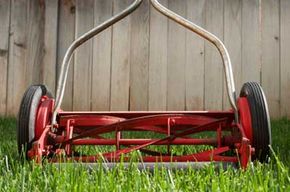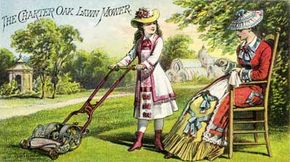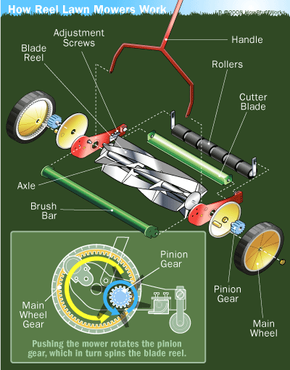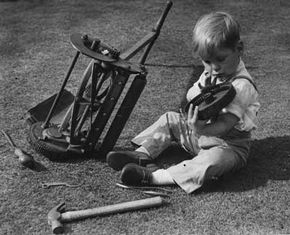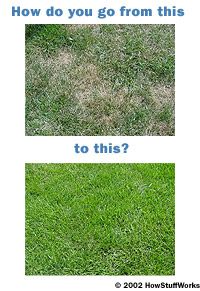Key Takeaways
- Reel mowers, which date back to the early 19th century, utilize a simple mechanism of a bladed reel mounted on a cart, leveraging wheel motion to cut grass with precision.
- Initially heavy and cumbersome, these mowers have evolved over the years to become lighter and easier to maneuver, with some modern adaptations including drive chains similar to bicycles.
- Despite the predominance of gas and electric mowers, manual reel mowers retain a niche for being eco-friendly and mechanically simple, making them a viable option for small lawn maintenance.
You walk outside on a bright summer day, close your eyes and let the sounds of the season wash over you: birdsong, buzzing bees and the roar of lawn-mower engines. It wasn't always this way. Believe it or not, there was a time when cutting your grass didn't involve driving or pushing a small, gas-belching engine back and forth across your property.
The first lawn mowers were manual reel mowers, also known as cylinder mowers. All a person had to do was push one across the lawn, and the wheels would spin a cylinder of sharpened, grass-cutting blades.
Advertisement
The 20th century brought about the invention of gas-powered reel mowers and gas-powered rotary mowers, but not everybody leapt on board with the new technology. Many stuck with manual reel mowers, and many continue to use them today.
While the basic technology hasn't changed much in more than a century, manual reel mowers still boast a number of key advantages over their gas-guzzling and rotary decedents. Manual reel mowers:
- Cost less than gas mowers.
- Are less dangerous than rotary mowers.
- Require little maintenance.
- Are environmentally friendly.
- Scoop and cut the grass blades, instead of tearing them like rotary mowers.
- Produce little noise.
- Are easy to transport and store.
- Don't stir up dust or emit harmful fumes.
- Don't fling debris around the yard.
The trade off? You wind up sacrificing speed and adding sweat. After all, your physical exertion moves a manual reel mower across the yard and also powers the blades. The amount of required force is generally the same as is required to push a larger rotary mower. However, the taller the grass, the more effort it takes to mow it. Tall weeds can be close to impossible to mow without first using a sling blade.
How did 19th-century inventors first apply textile mill technology to lawn care? Find out on the next page.
Advertisement
